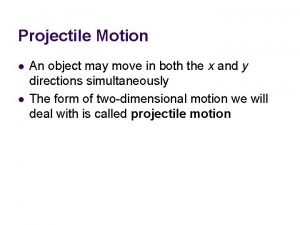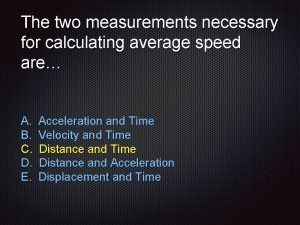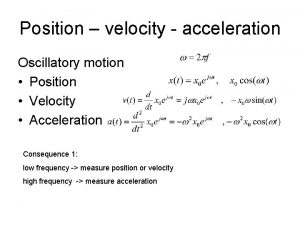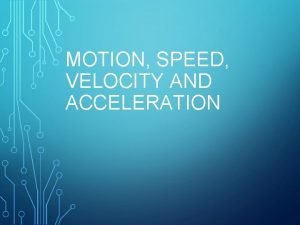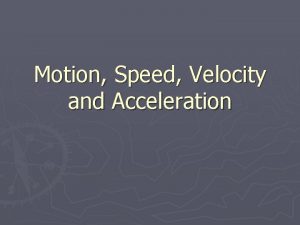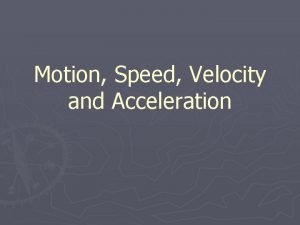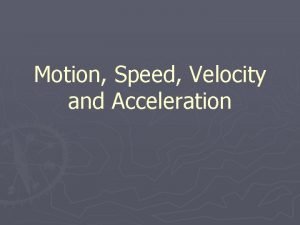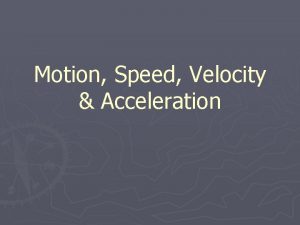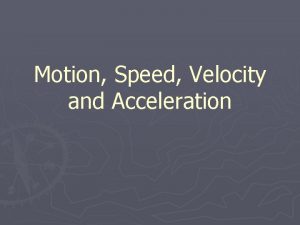Motion Part 4 Vector Measurements Velocity Acceleration Velocity










- Slides: 10

Motion Part 4 Vector Measurements: Velocity & Acceleration

Velocity • The speed and direction of an object’s motion. – 88 km / hr southwest • Velocity is a speed in a specific direction • Velocity is an example of a vector • A vector is a quantity that has both magnitude and direction

What This Means • If you want to understand how an object (like a car, ball, person, or rocket) moves, you have to understand three things about what it means "to be moving. " These three things "stick" to any object that moves, and are numbers that scientifically describe just how an object's motion is working. These three things are: 1. Position. This is precisely where an object is located. 2. Velocity. Precisely how fast an object is moving and in what direction 3. Acceleration. Precisely how fast an object's velocity is changing. 2/19/2021 3

Acceleration When a car moves faster and faster, its speed is increasing (velocity changed).

Acceleration When a car moves slower and slower, its speed is decreasing (velocity changed).

Acceleration When a car changes direction, its velocity changes too.

Acceleration measures the change in velocity Acceleration = velocity per unit time = overall change in velocity total time taken = m/s/s = m /s 2 = vf - v i t vector quantity

Example 1 If an object starts at 15 m/s and after 7 s is moving at 4 m/s, what is the object’s acceleration? a= ? a = vf – vi /t vi= 15 m/s a = 4 – 15 /7 a = -11 /7 vf= 4 m/s a = -1. 57 m/s 2 t= 7 s

Example 2 An object has an acceleration of 4 m/s 2. If it’s initial velocity is 0 m/s and it moved for 13 s, what is it’s final velocity? a = vf – vi /t 2 a= 4 m/s at = vf – vi at + vi = vf v f= ? (4)(13) + 0 = vf vi= 0 m/s 52 m/s = vf t= 13 s

Example 3 If an object starts at 20 m/s and has a final velocity of 0 m/s with an acceleration of -4 m/s 2, how much time will it take to stop? a = vf – vi /t at = vf – vi a= -4 m/s 2 t = vf – vi/a vf= 0 m/s t = 0 – 20/-4 t = -20/-4 vi= 20 m/s t=5 s t= ?
 Is v final velocity
Is v final velocity Formula of velocity
Formula of velocity Motion map examples
Motion map examples Acceleration vector projectile motion
Acceleration vector projectile motion Centripetal acceleration ac
Centripetal acceleration ac Linear acceleration vs tangential acceleration
Linear acceleration vs tangential acceleration Radial acceleration definition
Radial acceleration definition Angular acceleration and linear acceleration
Angular acceleration and linear acceleration Centripetal acceleration tangential acceleration
Centripetal acceleration tangential acceleration What two measurements are necessary for calculating speed
What two measurements are necessary for calculating speed What type of quantity is centripetal acceleration?
What type of quantity is centripetal acceleration?



